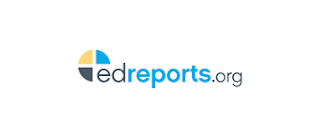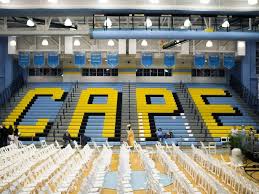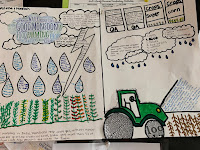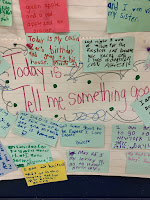TEACHER WELLNESS
Teaching Your Heart Out: Emotional Labor and the Need for Systemic Change
Love for their students is what drives many teachers—but it’s also what makes the profession really, really hard.
By Emily Kaplan
July 19, 2019
Early in my teaching career, I made my second-grade class cry.
I didn’t mean to. I was teaching a lesson on writing with detail. My students—7- and 8-year-olds living in a big city, many of them in poverty—were sitting around me in a circle, notebooks and pencils in their laps. We were at the beginning of the unit, and I was modeling the process of coming up with an idea.
“As writers, sometimes it helps to think of a time when we had a big feeling, like being happy, or angry, or sad.” I scrunched up my mouth, nodding: I was thinking really hard. “Like... let’s see. Well, I remember how I felt when I heard that my grandma had died. I felt really sad.” I uncapped a marker and scribbled notes on the whiteboard in my lap: Grandma died. Sad. “Maybe I’ll write about that moment. And I’ll include lots of details, like there were tears in my eyes, or how I couldn’t stop petting my cat.” I wrote on my whiteboard. Details: tears, petting cat.
My students were looking at me with total attention—something that didn’t happen often. I pressed onward. “Or, maybe—”
Suddenly, a little voice piped up: “My uncle died.” I looked up. It was a boy who often had trouble focusing. “He got shotted and he died.”
Silence.
And then I saw that there was a tear running down his cheek.
After a moment, I said, “I’m so sorry to hear that.” I took a breath. “Maybe—”
Another voice—a little girl’s—chimed in. “My grandpa died,” she said. “Because of cancer.”
I nodded.
And, then, suddenly, all of my students were talking at once.
“My auntie died.”
“My auntie died, too!”
“My cousin’s baby died before it even got borned!” And then a sob.
And then all of my students were crying at once. They were sniffling, blubbering, wiping snot on their sleeves. My classroom was filled with the pained, contagious cries of children whose emotional floodgates had burst open.
And I had absolutely no idea what to do.
Clearly, the lesson’s ship had sailed: We were not going to be talking about writing. Instead, I had to figure out how to comfort and corral a hysterical group of children—while seeming like I had everything under control. And I had to figure this out within the next 10 minutes, when the bell for recess was going to ring.
Suddenly, a particularly sensitive little boy, his cheeks stained with tears, stood up and ran to the corner, then slid down to the floor and put his head between his knees.
And as I watched him, helpless, I thought, “If only I could do that.”
Get the best of Edutopia in your inbox each week.
Email
Your email address
THE EMOTIONALITY OF TEACHING
All this time later, years after leaving the teaching profession, the memory of that day still gnaws at me. Had I set students up for emotions they weren’t prepared for? What messages had my words—and my actions and reactions—communicated? What should I have done differently? I remember little about my academic instruction that year—the subtraction lessons, the spelling tests—but the memories of that day and so many other deeply emotional experiences that year have lingered.
Because that, more than teaching kids how to read and write, is what teaching is all about: reaching clear to the heart of another human being and using everything you’ve got to make a difference. It’s calming kids when they’ve had a rough recess, celebrating when they lose their first tooth, absorbing their struggles and their traumas, channeling their joy, and investing the currency of your own emotions in an effort to help them grow.
It’s what sociology professor Arlie Russell Hochschild, in her 1983 book The Managed Heart, first called “emotional labor”: managing one’s own feelings in order to manage others’. It’s work that is often invisible and almost always undercompensated—and it’s also really, really hard.
For Allison Jacobs Friedmann, who has taught elementary and middle school in Boston for 20 years, teaching is walking an emotional tightrope—and her description of a day at work sounds as though it’s lifted from Hochschild’s book. “Every day, 20 to 25 children arrive at your door, and each is bringing a range of emotions,” Friedmann explained to me recently over email. In order to reach each of these students, teachers must not only respond to—and often gently guide and correct—students’ behavior, she says, but also do so “with a calm and consistent tone. You have to be unemotional in order to make space for their emotions.”
The job description is to provide academic instruction, but the most complex, difficult-to-master aspects of teaching involve guiding students “to be little emotional managers,” Hochschild told me. “You’re teaching them their ABCs, but also how not to spin out of control, how to forgive, how to negotiate, how to take things one step at a time.”
And teachers have to do all of this—for every one of their students, often all at once—while also managing their own feelings. “If you’ve had a terrible day at home,” says Hochschild, “you set that aside for the child in front of you, who comes in with his or her own story.” Her comments allude to one of the most difficult paradoxes in education: It’s a profession that elicits strong emotional reactions from its practitioners while also requiring that, for the sake of the students’ well-being—not to mention the decidedly unappealing prospect of an out-of-control classroom—they demonstrate the illusion of unflappable calmness and control.
WHERE POWER RESIDES
As I was planning this article, I was thinking I would ask for expert advice on the ways that teachers can avoid this fate by, say, setting appropriate boundaries or examining their own emotions in order to manage them more effectively.
But when I asked Hochschild for some tips, her response took me by surprise. “I wouldn’t say that’s the right way to look at it at all,” she replied. She explained that teachers—who, apart from students and parents, tend to be the furthest from the center of school power—are the “shock absorbers” of an overwhelmed system. “People can blame the teacher because too much expectation has been placed on the school system,” she said. In other words, when students fail to get what they need—from their families, from schools, from society as a whole—teachers are expected, unfairly, to pick up the slack. And when they inevitably fail to do so, they feel personal and professional guilt, which they must suppress for the broader good: Emotional labor begets more emotional labor.
And the further you are from the locus of power, the fewer supports in the system and the more emotional labor you wind up doing, according to Hochschild. This is why, for instance, teachers in high-poverty districts—where many feel like they’re oppressed by overwhelming systemic obstacles—often report higher degrees of burnout than their counterparts in more privileged districts. This framework also explains why teachers, direct caregivers who are generally undervalued by society, are expected to take their students’ struggles personally—while doctors, direct caregivers with a relatively high degree of social status, are not expected to magically cure patients made sick by their surroundings.
SYSTEMIC PROBLEMS, SYSTEMIC SOLUTIONS
Because the issue of emotional labor is systemic, Hochschild concludes, the answers need to be systemic too. Although teachers should always expect to bring their humanity and vulnerability to their job, they can’t—and shouldn’t—be expected to alleviate the pressures that cause them to feel such disproportionate ownership over their students’ emotional lives. Instead, we need to address the fact that the system expects teachers to do this in the first place.
That starts, Hochschild says, with creating “an atmosphere in which teachers have a voice and feel respected. What makes emotional labor gratifying rather than burdensome is a functioning care system.” Only when this is in place, she says—when teachers are no longer “in a defensive crouch, but feel like they’re part of a larger team”—will the proper emotional and psychological support structures be available. This is starting to happen, she says, in forward-thinking districts where, she says, teachers’ expertise is respected; as a result, teachers are able to assess their own strengths and weaknesses, manage their well-being more proactively, and pursue their professional growth. In other words, when teachers can shoulder a normal, appropriate range of emotional stress—but are not expected to take responsibility for the ills of society—“it means the system is healthy.”
But according to most teachers I spoke with, a healthy system is nowhere to be found. “Because society does not meet all my students’ basic needs, they come to school with heavy emotional loads,” Friedmann said, reflecting on the growing sphere of her responsibilities and the lack of a proportional response from the school. “And then it becomes my job to help them manage all those very large feelings.” Jianan Shi, who taught high school in Boston and Chicago before transitioning into nonprofit work, agrees. “We are fighting in the context of fundamental human rights which are not being delivered.”
I often think about my second graders from that year, those children mourning the people they’d lost. I could have done a lot more for them, I know, in that moment, that year.
At times I feel that I failed them. Other times I feel that I did the best I could. Often, I feel both of these things at once.
But what I know with certainty is that I wasn’t up to the task of absorbing, reflecting, and redirecting the feelings of wounded 7-year-olds. I was their teacher, and I loved them deeply, but I couldn’t compensate for all the injustice in their lives.
To help them—and they’re big now, those kids, much bigger and stronger than their second-grade selves—we must be willing to look for bigger solutions too, beyond the narrow confines of classrooms to the broader contours of society itself. And as we check our progress, we should never compromise on the health of our teachers, who are—in every way—the system’s vital heart and soul.
SHARE THIS STORY












































